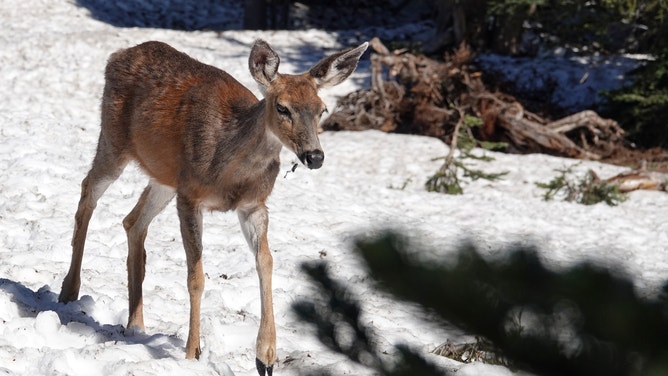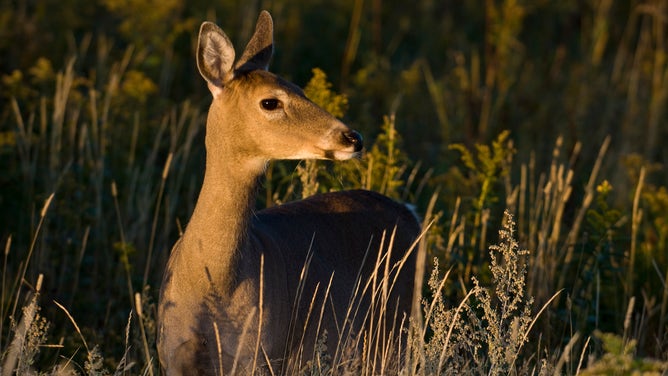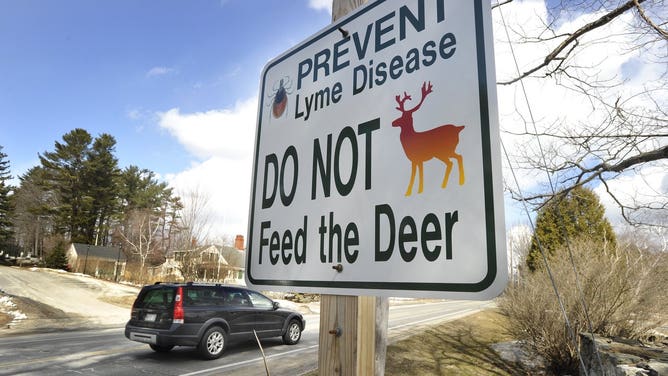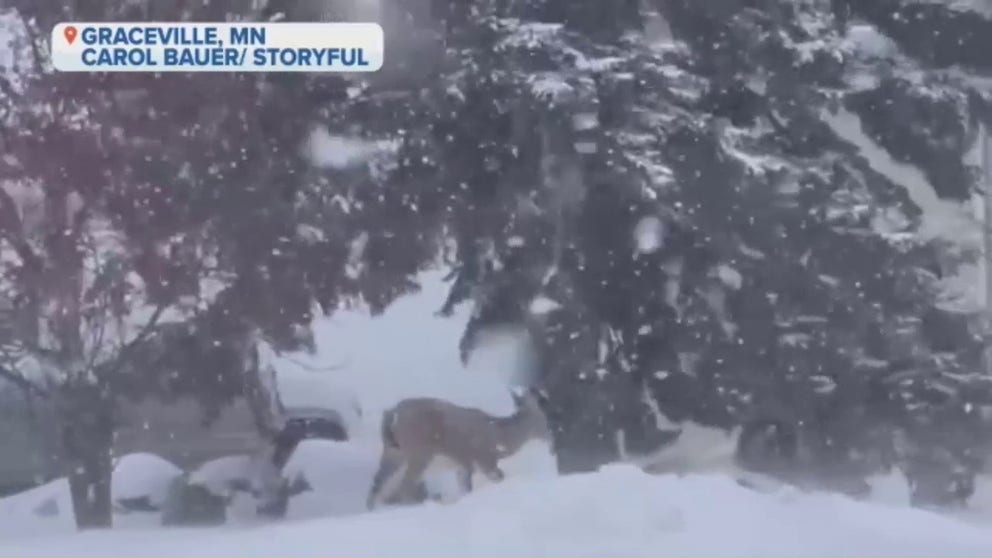How deer and elk survive harsh, snowy winters
The animals find ways to stay warm and conserve energy in the winter, but the best way for them to survive is to begin preparing for it months in advance.
Deer forages as heavy snow pummels western Minnesota
Video shows deer foraging in Graceville, Minnesota as heavy snow blankets the area.
Deer and elk have developed a number of adaptations that allow them to survive the cold and snow of winter.
Some of those modifications involve moving strategically to stay warm and conserve their energy.
Following the sun and food

A deer in a snowy Olympic National Park in Washington. June 22, 2022.
(Thomas O'Neill / NurPhoto / Getty Images)
One acclimation technique of deer and elk involves moving to locations with good solar insulation and where plentiful sunlight is melting snow, according to Washington Department of Fish and Wildlife ungulate specialist William Moore.
Deer and elk may also migrate to lower elevations to find locations with low snow depths, Moore added. The low snow depths allow the animals to move around more easily, thereby maximizing their energy reserves.
WHY DEER HUNTING SEASON HAPPENS IN THE FALL
"When wind kicks up and when snow depths get deep, and you get ice-encrusted snow – when they're forced to move through that type of environment, they're going to be spending a lot of energy," Moore said.
Energy that deer and elk lose is difficult to regain in the winter, due to the lack of high-quality food available at that time. Because of this, Moore said the best way for the animals to survive winter is to prepare for it in the warmer months.
Preparing for winter months in advance

A female deer, or doe, in sunset light.
(Dennis Fast / VWPics / Universal Images Group / Getty Images)
During spring and summer, deer and elk are able to take advantage of the abundant and nutritious plant material and eat as much of it as they can. In doing so, the animals are spending the time leading up to winter filling up their fat and muscle tissue reservoirs.
According to Moore, deer and elk live on these reserves throughout winter.
WATCH: YOUNG BULL ELK RESCUED FROM A DEEP MUD HOLE IN COLORADO
These supplies are so critical that the animals adjust their migration routes based on which locations have historically had the most abundant and most nutritious food.
Moore said the animals will follow a "plant green-up" as it moves up in elevation and time their migration to higher elevations accordingly to maximize their energy intake.
Since the animals usually go from having 12% body fat at the start of winter to 4.5-5.5% body fat by the end of the season, building up their reserves in the months beforehand is critical to their survival, according to Moore.
Don’t feed the animals

Sign warning passersby against feeding deer. Not only does keeping away from deer help prevent Lyme disease, but it also keeps the deer safe.
(John Ewing / Portland Press Herald / Getty Images)
While surviving winter may seem tough for the deer and elk, feeding the animals during that time is not recommended as they are essentially unable to digest the food.
The animals have four-chambered stomachs that contain bacteria geared toward processing the food deer and elk would eat. Moore said the bacteria are plentiful in the summer when the animals are foraging and filling up their reserves. By winter, however, the bacteria have started to dry up.
Because of this lack of bacteria in their stomachs in the winter, deer and elk are unable to digest that food.
"So, the best strategy for those people is to leave those deer alone," Moore said. "Let those deer winter in peace."
